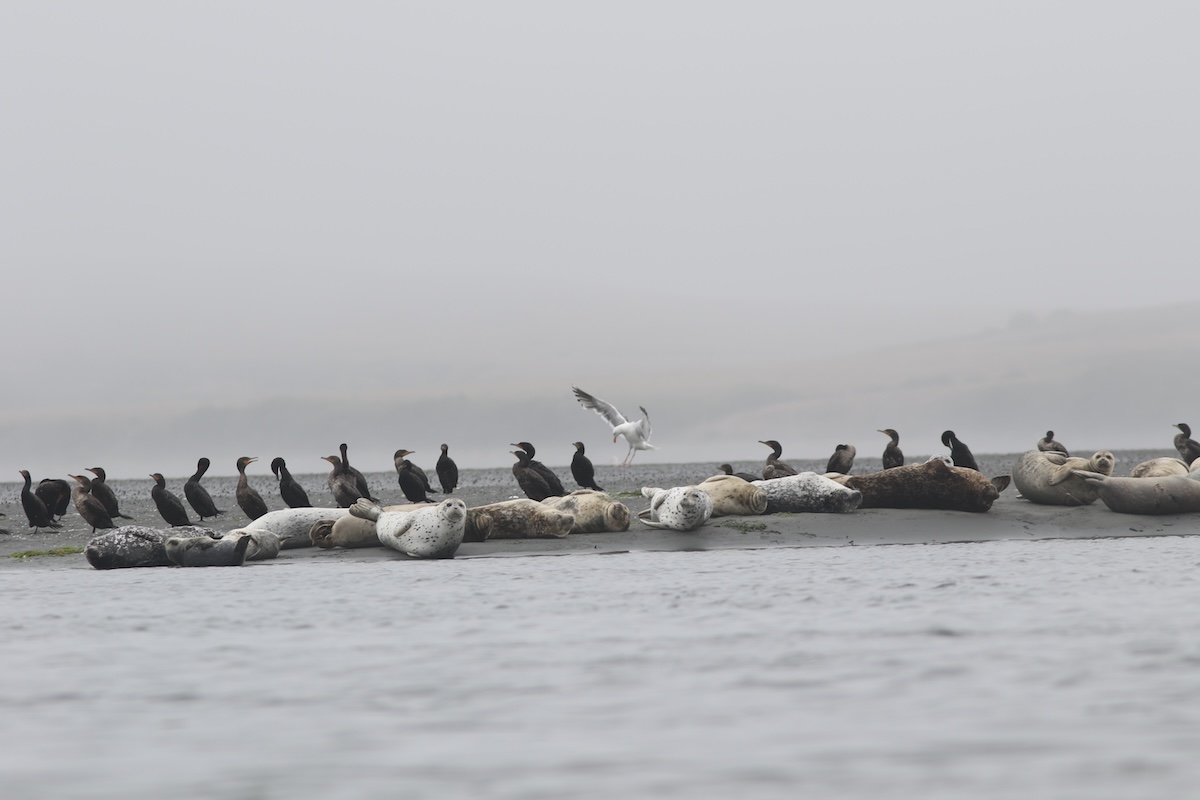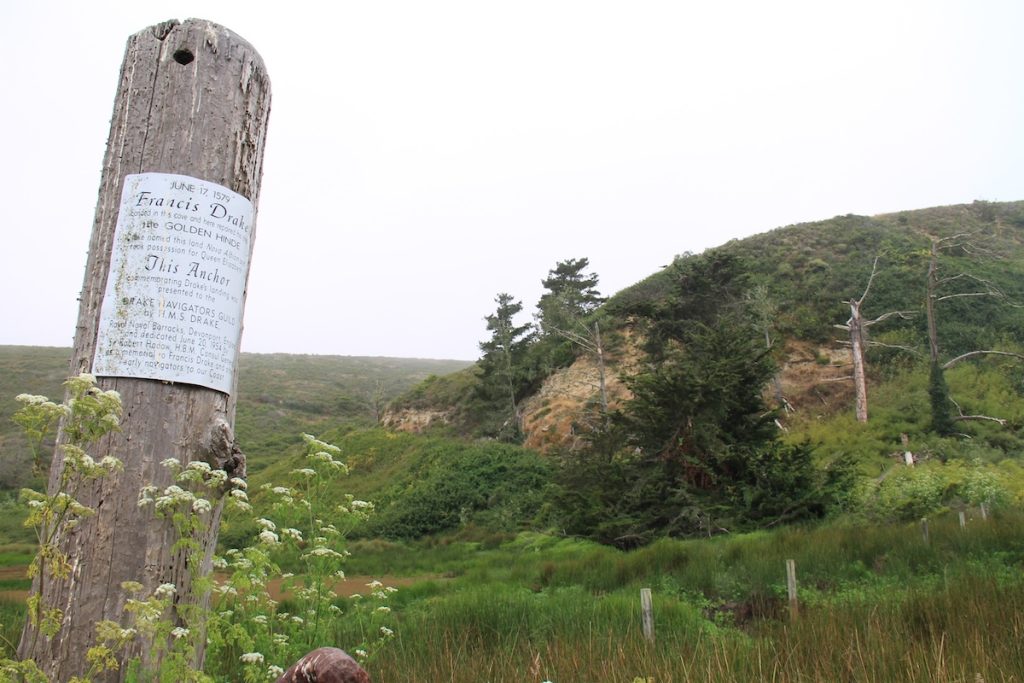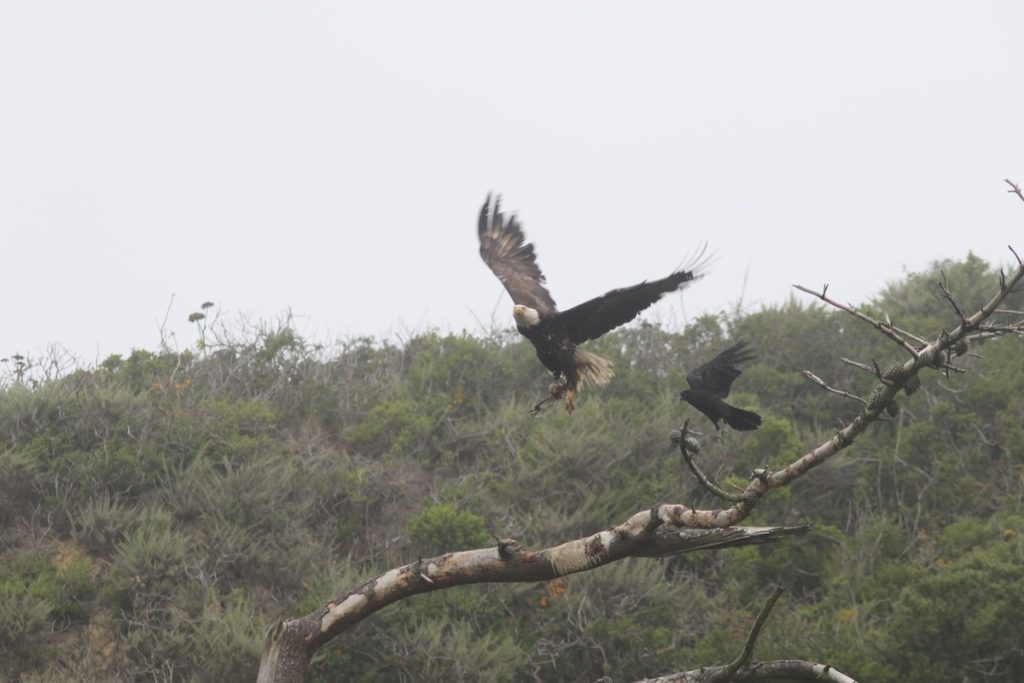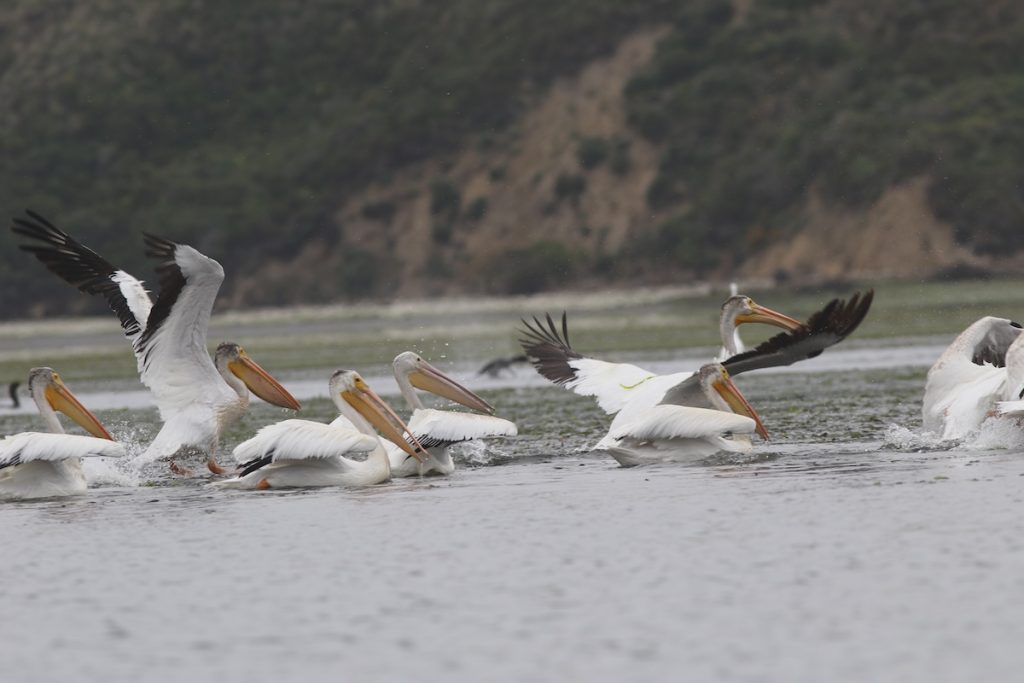Ebb and Flow

From the moment I slid my kayak into the water at the back end of Drakes Estero, I was in serious navigational mode within the Point Reyes National Seashore. It was 5 am, and pea soup fog persisted one hour north of San Francisco.
Drakes Estero is massive wetland, and a great biome to explore, but it’s only accessible for paddling from July 1 to February 28. The rest of the year it’s closed off so spotted harbor seals can pup unimpeded.
From the air, Drakes Estero resembles a withered human hand with several long, spindly fingers that lead to stunningly scenic natural harbors. They include Barries Bay, Creamery Bay, Schooner Bay, and Home Bay. Limantour Bay is the thumb of the Estero. It’s a long, gritty sandspit known as Limantour Spit buffering the entrance of the Estero. I put my kayak in the water at Schooner Bay. It’s right next to the narrow road that leads to the Point Reyes Lighthouse. There’s a sliver of a channel there that requires some tide to sneak into one of the main channels that leads to Drakes Bay and eventually the Pacific Ocean.
Drakes Estero is within the Phillip Burton Wilderness Area nestled within the National Seashore. Drakes Estero and nearby Estero de Limantour are the only marine wilderness areas on the west coast of the continental United States.
Using the Land
Visibility was difficult. Low-lying fog hung tough through most of the morning. The combination of fog and muted brown/gray-colored water, sandbars, and tidal mudflats made it difficult seeking out the right serpentine channel leading to open water. I made several wrong turns that led to dead ends or into waters too shallow to paddle.
Wading great egrets proved to be a greater indicator of which water routes to avoid. There were many of them strolling the shallows preying on crabs and baitfish. I would’ve run my kayak into the mud if I paddled into their neighborhood. I also felt for moving water. The tide was on the ebb and was moving faster than me when I wasn’t paddling. Where the water was rippling, it was deeper, and the current was running toward one of the main, wide-open channels.


I stroked past broad, sweeping sandbars with no horizons. The fog hovered just above them, making visibility tricky. Up close, double-crested cormorants huddled on the sandbars’ edge, sharing space with gulls and American white pelicans. After about two hours of gradually navigating a path toward the ocean, I paddled past a significant hideaway by a famous British explorer.
Fortified by sand dunes, swaying dune grasses, and thorny wild roses, was a monument. Burly driftwood stood tall with a weathered plaque attached to it, commemorating Sir Francis Drake and his circumnavigation, sailing around the world.
The year was 1579, and Drake was hiding from the Spanish, who considered him a pirate. He needed to repair his ships, and so he tucked into what is now Drakes Bay but took it a little further and with extremely high tides was able to sail inside to what is known as Drakes Estero.
He possibly would’ve sailed past hordes of spotted harbor seals hauled out on a steep berm after entering the estero. He also would’ve seen migrating American white pelicans roosting alongside legions of cormorants, and majestic bald eagles perched in the Monterey cypress trees

The wetland was the perfect refuge. His crew would’ve had great vantage points on either side of the estero to spot the Spanish, sheer bluffs cloaked in coastal sage chaparral stood tall on either side of the estero. Food sources and fresh water were abundant.
Drakes Bay
While rounding a massive tidal flat that was several football fields long and a couple hundred yards wide, I noticed what was potentially a large piece of driftwood or rock-outcropping in the middle of the flat. I ran the bow of my boat onto a berm and scanned with my binoculars. All by its lonesome and seemingly enjoying a reprieve from the open ocean was a snoozing northern elephant seal.
Slumbering the morning away, the bull elephant seal snored, snorted, and certainly didn’t have a care in the world. It never budged on the mudflat. It had used an incoming tide to reach its sleep spot, and it stayed there until the tide cycled through.
I kept paddling toward Drakes Bay, passing hundreds of harbor seals bobbing near Limantour Sandspit. There wasn’t another paddler the entire time. The fog lifted just enough to see the horizon east and west.
After returning to the monument, I waited for the tide to turn. The swift-moving tide returned me to the back end of Schooner Bay. It easily lifted me onto the slick muddy embankment where the day began. Just as the sun rises and sets, the tides turn every day.







You must be logged in to post a comment.